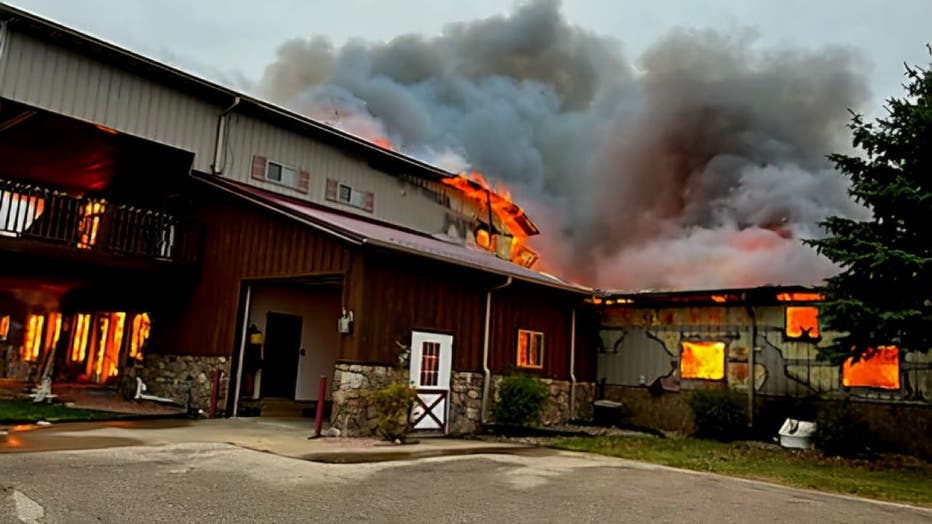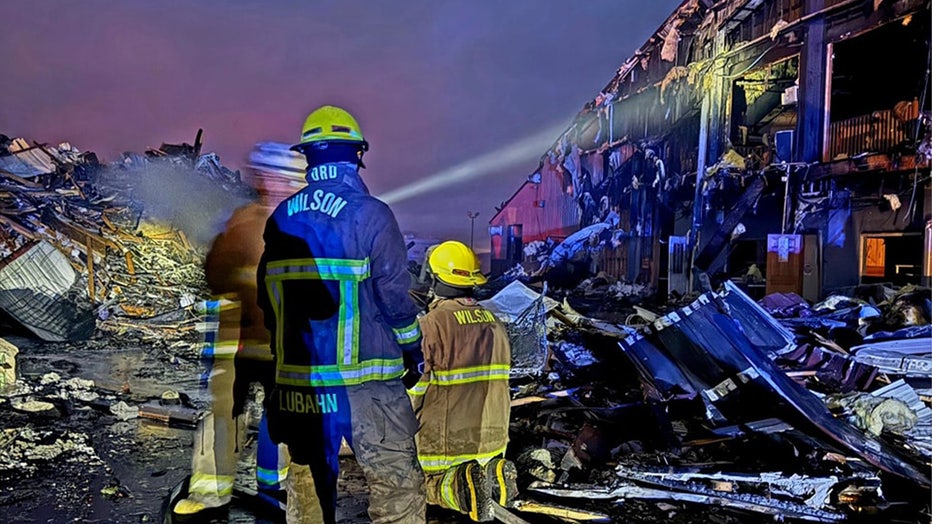Minnesota Equestrian Center fire kills 2 horses, a cat

A fire at the Minnesota Equestrian Center killed two horses and a cat. (Wilson Fire Department)
WINONA, Minn. (FOX 9) - A fire at the Minnesota Equestrian Center destroyed two buildings and left two horses and a cat dead.
What happened
The Wilson Fire Department responded to the Minnesota Equestrian Center at 11:55 p.m. on Thursday on a report of a barn fire.
The center is a large complex of barns and show arenas that are interconnected to each other through breezeways and corridors, a press release says. There's also a connected home on the front of the building.
When fire crews arrived, they found one barn fully engulfed and the attached home also on fire, the release notes.

A fire at the Minnesota Equestrian Center killed two horses and a cat. (Wilson Fire Department)
Additional fire departments were called in due to the "size of the building, the heavy fuel load within the building, and the advanced stage of the fire," authorities say.
Crews worked to stop the spread of the fire, launching a defensive fire attack on the breezeway that connected the barn that was on fire to the show arena. Eventually, crews used an excavator to remove the breezeway from the arena to minimize the chance of the fire spreading further.
Fire crews were on the scene for hours putting out hot spots.
No people were injured, but two horses and a cat died in the fire.
Buildings destroyed

A fire at the Minnesota Equestrian Center killed two horses and a cat. (Wilson Fire Department)
The home and one of the barns were destroyed in the fire, but fire damage to the arena was "minimal," the release notes.
Of the 128,000-square-foot Minnesota Equestrian Center, about 31,000 square feet were completely destroyed in the fire.
Wilson Fire Department notes the Minnesota Equestrian Center is the largest structure in the department's response area and one of the largest in rural Winona County. Nearly 100 personnel worked for more than eight hours to put out the fire, using an estimated 120,000 gallons of water and 50 round trips to water sources to haul the water to the scene.

